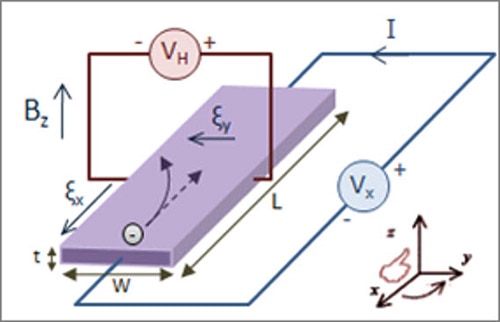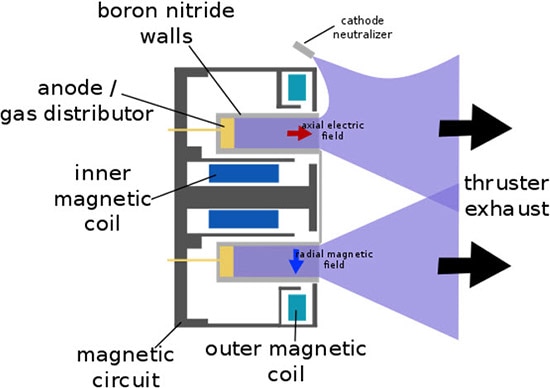制造商零件编号 DRV5055A1ELPGMQ1
SENSOR HALL EFFECT ANALOG TO92-3
Texas Instruments
In Electrical Engineering, one of the most fundamental (and subsequently coolest) principles is the Hall Effect. It enables a number of functions, such as proximity sensors, current detectors, or even vacuum thrusters. Discovered in 1879 by famed physicist Edwin Hall, the phenomenon essentially talks about the fact that a voltage difference occurs across a conductor/semiconductor when a magnetic field perpendicular to current flow is applied. This seemingly simple discovery has created a world of electronics and applications that are extremely crucial to our devices today.

Essentially, the Hall Effect is an interaction between actively moving charges, electrical currents through a wire or area, and magnetic fields applied to it. When a magnetic field perpendicular to the current is applied to a wire (or simply any conductor), the Lorentz force forces the charges to one side where they accumulate, thus causing the overall voltage difference.
The way that the Hall Effect can be harnessed is through the fact that we can practically measure any magnetic field difference through this phenomenon. The voltage as a result of the Hall Effect is referred to as the Hall Voltage and is directly proportionate to the product of the applied magnetic field, current, and the material's Hall coefficient. We can then utilize the values within this equation to execute a number of applications.
The Hall Effect is actually already used in a number of sensors that detect a wide variety of variables. It's used in position and speed sensors throughout the automotive industry. Another area that it's used a lot in is proximity sensors for security systems or for any automated activities. One unique application is for current sensing, as you can determine the magnitude of a current through the Hall Voltage, thus allowing for current monitoring and regulation.
One really cool application for the Hall Effect is in Hall Thrusters, a Sci-Fi-esque booster that's used in rocketry and aerospace.

How it works is through utilizing a magnetic field to accelerate ions to a certain area and thus "thrust" them. It will typically use gases like Xenon and Krypton and, through the Hall Effect, produce thrust with said noble gases. This is especially useful for space applications as it can be activated totally electronically, and the fuel is relatively stable. Furthermore, they can be extremely precise and produce high thrusts while taking up a small area. They tend to be the thruster of choice for Starlink's satellites.

There are a ton of Hall Sensors on the market today, which can be utilized for a number of projects. You can simply make a magnetic field detector with it to identify if there are any magnetic fields present and how strong they are. You could also use it to make a speedometer by attaching a magnet to a wheel and turning it, utilizing the hall sensor to detect the presence of the magnetic field, and calculating how often a field is applied. This can then be incorporated into a number of other projects, ranging from motor speed control to environmental monitoring systems.
You can connect basic Hall Sensors with a microcontroller to get an idea of the output and input values, and then work from there. Make sure to check out the datasheet of each too!
All-in-all, there are a number of applications with the Hall Effect, and this especially cool principle opens up a great deal of opportunities. Since its invention, a great deal of pivotal and revolutionary technologies have emerged from it, and as materials research only becomes more advanced, 's no telling what capabilities we'll achieve with it next.
Click here for more information and a video depicting the phenomenon.